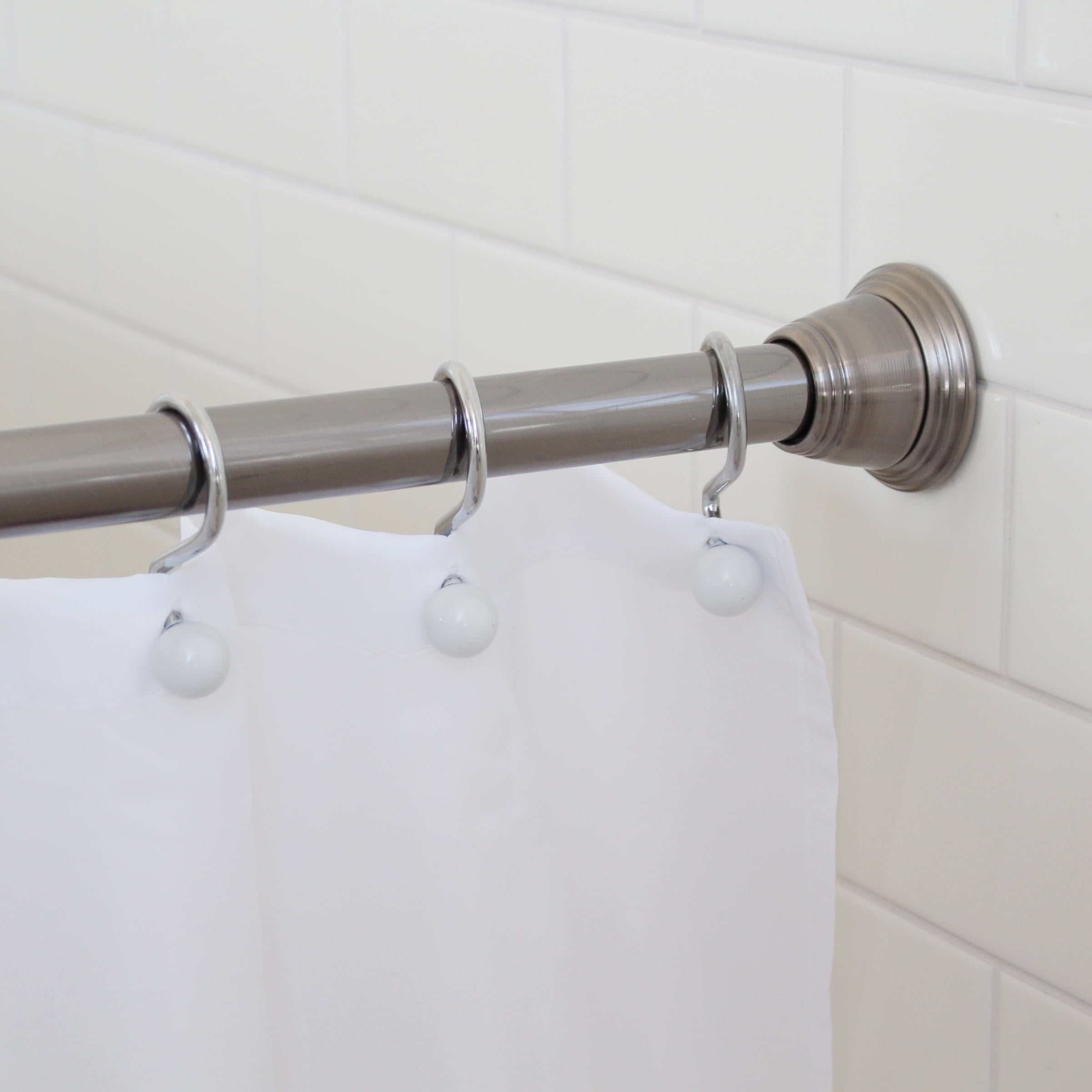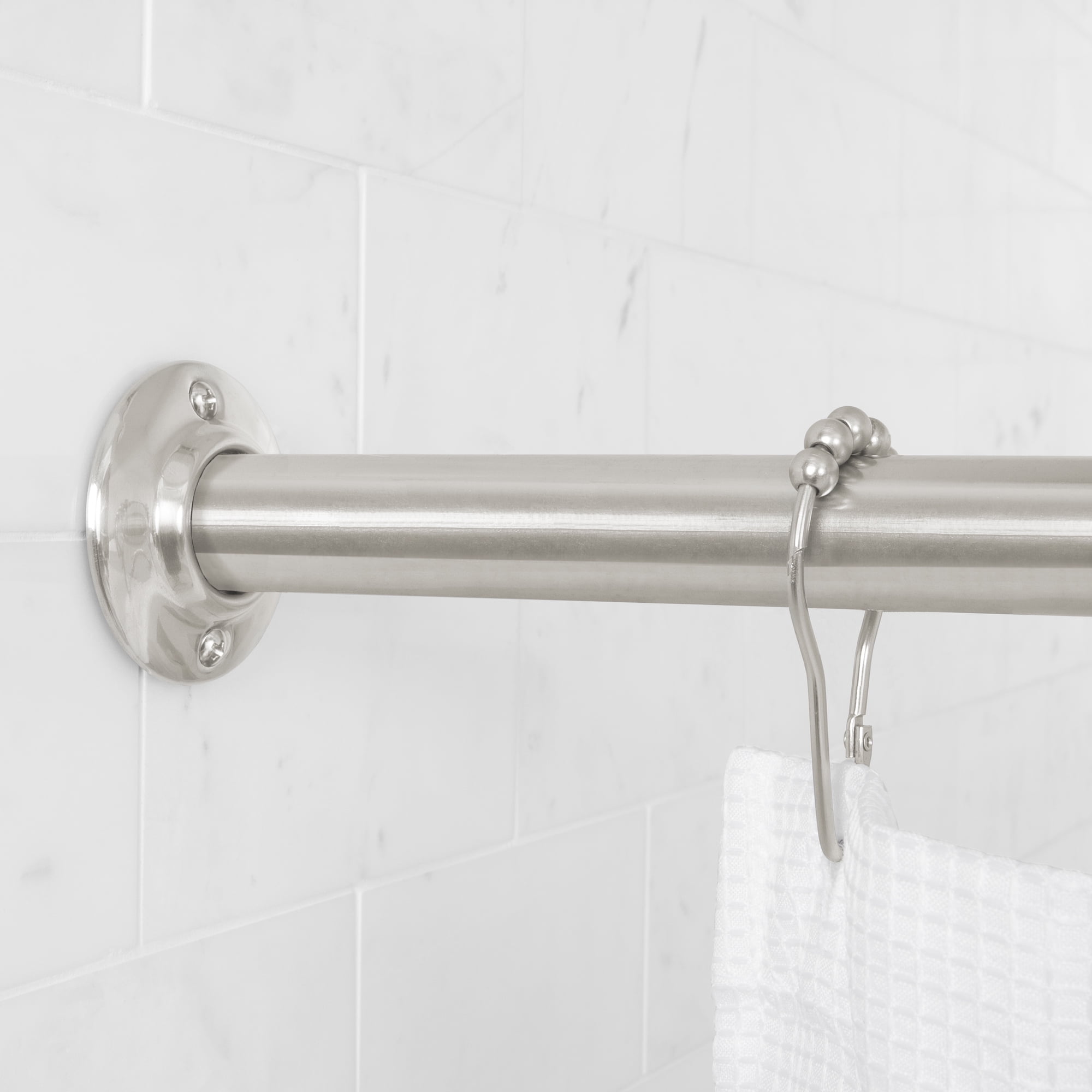Bathroom Curtain Rod Styles and Types

Choosing the right bathroom curtain rod is essential for both functionality and aesthetics. It’s a crucial element that completes the look of your bathroom, while also ensuring your privacy and providing a barrier against moisture. Target offers a variety of curtain rod styles and types to suit different bathroom sizes, décor, and preferences.
Types of Bathroom Curtain Rods
The types of bathroom curtain rods available at Target can be broadly categorized into three main categories: tension rods, adjustable rods, and fixed rods. Each type has its own advantages and disadvantages, depending on your specific needs and bathroom setup.
- Tension Rods: These rods are designed to be installed without any drilling or hardware. They work by creating tension between two opposing surfaces, typically the walls of your shower or tub enclosure. Tension rods are a convenient and hassle-free option for renters or those who prefer a temporary solution. They are also ideal for smaller bathrooms or areas where drilling is not feasible. However, tension rods are generally less durable than other types of rods and may not be suitable for heavy curtains. They can also be prone to slipping or falling if not properly installed.
- Adjustable Rods: Adjustable rods are designed to fit a range of shower or tub widths. They typically consist of two or more sections that can be extended or retracted to adjust the overall length of the rod. Adjustable rods offer flexibility and are a good choice for bathrooms with non-standard dimensions. They are also generally more durable than tension rods and can support heavier curtains. However, adjustable rods may require some assembly and may not be as aesthetically pleasing as fixed rods.
- Fixed Rods: Fixed rods are designed for permanent installation and require drilling into the wall. They offer the most secure and durable option for hanging bathroom curtains. Fixed rods are available in a variety of materials, including metal, wood, and plastic, and can be customized to match your bathroom’s décor. They are also the most versatile option, as they can be used with a wide range of curtain styles and weights. However, fixed rods require more effort to install and may not be suitable for renters or those who prefer a temporary solution.
Unique Bathroom Curtain Rod Designs
Target offers a variety of bathroom curtain rods with unique designs that can add a touch of style to your bathroom. These include:
- Curved Rods: Curved rods are a popular choice for adding a modern or contemporary touch to the bathroom. They can be used to create a unique focal point in the shower area and can be particularly effective in smaller bathrooms, where they can help to visually expand the space.
- Double Rods: Double rods are a practical solution for those who want to use two different types of curtains in their bathroom, such as a shower curtain and a liner. They can also be used to create a layered look, adding visual interest and texture to the space.
- Decorative Rods: Decorative rods are available in a wide range of styles and finishes, from sleek and minimalist to ornate and traditional. They can be used to enhance the overall aesthetic of the bathroom and can be chosen to complement the existing décor.
Choosing the Right Bathroom Curtain Rod

Selecting the perfect bathroom curtain rod is crucial for both functionality and aesthetics. It needs to be strong enough to support your chosen curtains, fit your shower space, and complement your bathroom’s style.
Shower Size and Curtain Weight, Bathroom curtain rods target
The size of your shower and the weight of your curtains are key factors to consider when choosing a curtain rod. Measure the width of your shower opening and add 2-3 inches on each side to ensure the curtains hang properly and provide adequate coverage. If you have heavy fabric curtains, you’ll need a rod that is sturdy and can handle the extra weight. For lightweight curtains, a thinner rod may suffice.
Measuring the Shower Space
To determine the correct rod length, measure the width of your shower opening. Always add a few extra inches on each side to ensure the curtains hang properly. For example, if your shower opening is 36 inches wide, you should choose a rod that is at least 40 inches long.
Bathroom Curtain Rod Materials
Bathroom curtain rods are available in a variety of materials, each with its own advantages and disadvantages.
- Metal: Metal rods are durable, rust-resistant, and available in various finishes to match your bathroom décor. They can be more expensive than plastic or wood rods, but they are also more likely to last longer.
- Plastic: Plastic rods are affordable and lightweight, making them easy to install. However, they may not be as durable as metal rods and can break under heavy weight.
- Wood: Wood rods can add a touch of elegance to your bathroom. They are generally more expensive than plastic or metal rods and may require more maintenance to prevent warping or cracking.
Installing Bathroom Curtain Rods at Target: Bathroom Curtain Rods Target

Installing a bathroom curtain rod is a simple DIY project that can add a touch of style and functionality to your bathroom. Target offers a wide variety of curtain rods in different styles, finishes, and lengths to suit your needs and preferences. This guide will provide you with the step-by-step instructions you need to install your new bathroom curtain rod.
Tools and Materials Needed
You will need a few basic tools and materials to install your bathroom curtain rod. Here is a list of what you’ll need:
- Curtain rod
- Screwdriver
- Level
- Pencil
- Measuring tape
- Drill (optional)
- Drywall anchors (optional)
- Screws (optional)
Installing a Tension Rod
Tension rods are the simplest type of curtain rod to install. They are designed to fit snugly between two surfaces without the need for drilling or screws.
- Measure the width of your window or shower opening.
- Select a tension rod that is slightly longer than the measurement.
- Extend the tension rod to its full length.
- Place the tension rod over the top of the window or shower opening, ensuring that it is level.
- Twist the ends of the tension rod clockwise to tighten it and secure it in place.
Installing a Screw-In Rod
Screw-in rods require drilling holes in the wall to secure the brackets.
- Measure the width of your window or shower opening and add about 6 inches on each side to determine the placement of the brackets.
- Mark the wall with a pencil where you will install the brackets, ensuring they are level.
- Use a drill to create pilot holes at the marked locations. The pilot holes should be slightly smaller than the screws provided with the brackets.
- Attach the brackets to the wall using the provided screws. If your wall is made of drywall, you may need to use drywall anchors to provide extra support.
- Slide the curtain rod into the brackets.
Installing an Adjustable Rod
Adjustable rods allow you to customize the length of your curtain rod to fit your window or shower opening.
- Measure the width of your window or shower opening.
- Select an adjustable rod that can be extended to fit the measurement.
- Follow the instructions provided with the adjustable rod to extend it to the desired length.
- Install the brackets according to the instructions provided with the rod. This may involve drilling holes or using tension mounting methods.
- Slide the curtain rod into the brackets.
Tips for Ensuring a Secure and Stable Installation
- Use a level to ensure that the brackets are installed straight and level.
- If your wall is made of drywall, use drywall anchors to provide extra support for the brackets.
- Use screws that are the appropriate length for your wall material. Screws that are too short may not provide adequate support, while screws that are too long may damage the wall.
- When installing a tension rod, make sure that it is tightened securely to prevent it from slipping or falling.
